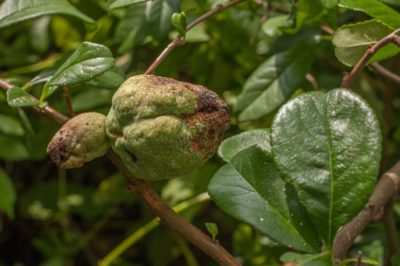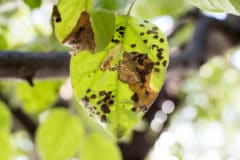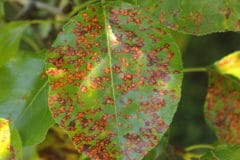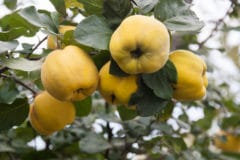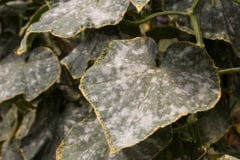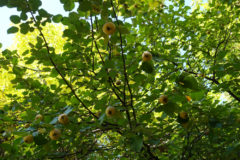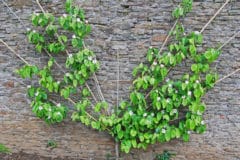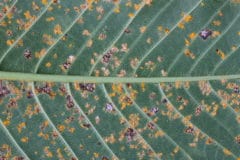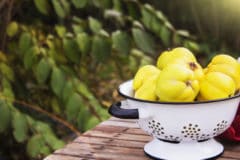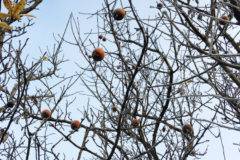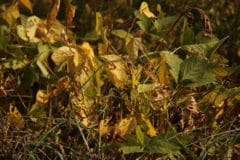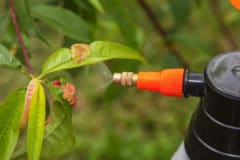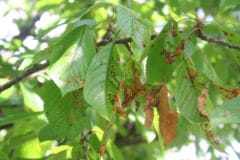Quince Rust Life Cycle and Symptoms
Before the Gymnosporangium claviceps fungus ever reaches your quince trees, it leaves unmistakable calling cards on the local cedars and junipers. Look for:
- Cigar-shaped galls on the tips of the twigs and branches. The bark around them is often severely cracked.
- Cushionlike blisters filled with orange, spore-filled “goop” bursting from the galls during damp spring weather. Called telia, they return year after year.
Wind and driving rain carry the badiospores to their Rose family hosts, where they distort the leaves, buds and young fruit. By the time they ripen, quince fruits also develop tiny white “cups” filled with neon-orange spores. Wind transports the spores back to their Cedar family hosts for re-infection.
Quince Rust Range
The quince rust fungus’ preferred hosts, Eastern red cedars (Junipers virginiana), grow in USDA plant hardiness zones 2 through 9. Quince trees grow in zones 4 through 9, so the problem is an ever-present threat.
Treating Quince Rust
The only way to treat quince rust is to prune and destroy the infected parts from both the cedar and quince trees. Remove:
- All the cankered branches, twigs and leaf stalks.
- Deformed quince fruit blemished with dark spots or spore cups. Don’t overlook the fruit that’s fallen to the ground.
Of course, this treatment only applies to cedar trees you own or have permission to prune. Otherwise, just prune your quince trees back to healthy wood.
Preventing Quince Rust Disease
Quince rust’s two-host life cycle complicates the logistics of preventing an infection. That said, one of these methods might work for you:
Spraying your quince trees with organic sulfur at the manufacturer’s recommended strength when the local cedar or juniper trees are releasing spores. Keep in mind that wind carries the spores up to 2 miles, so you might have to monitor dozens or even hundreds of trees.
Replacing your cedars or junipers with rust-resistant northern white cedars (Thuja occidentalis). Suitable for USDA zones 2 through 7, they grow 20 to 30 feet tall with fragrant, flat yellow-green foliage and attractively peeling, reddish-brown bark.
